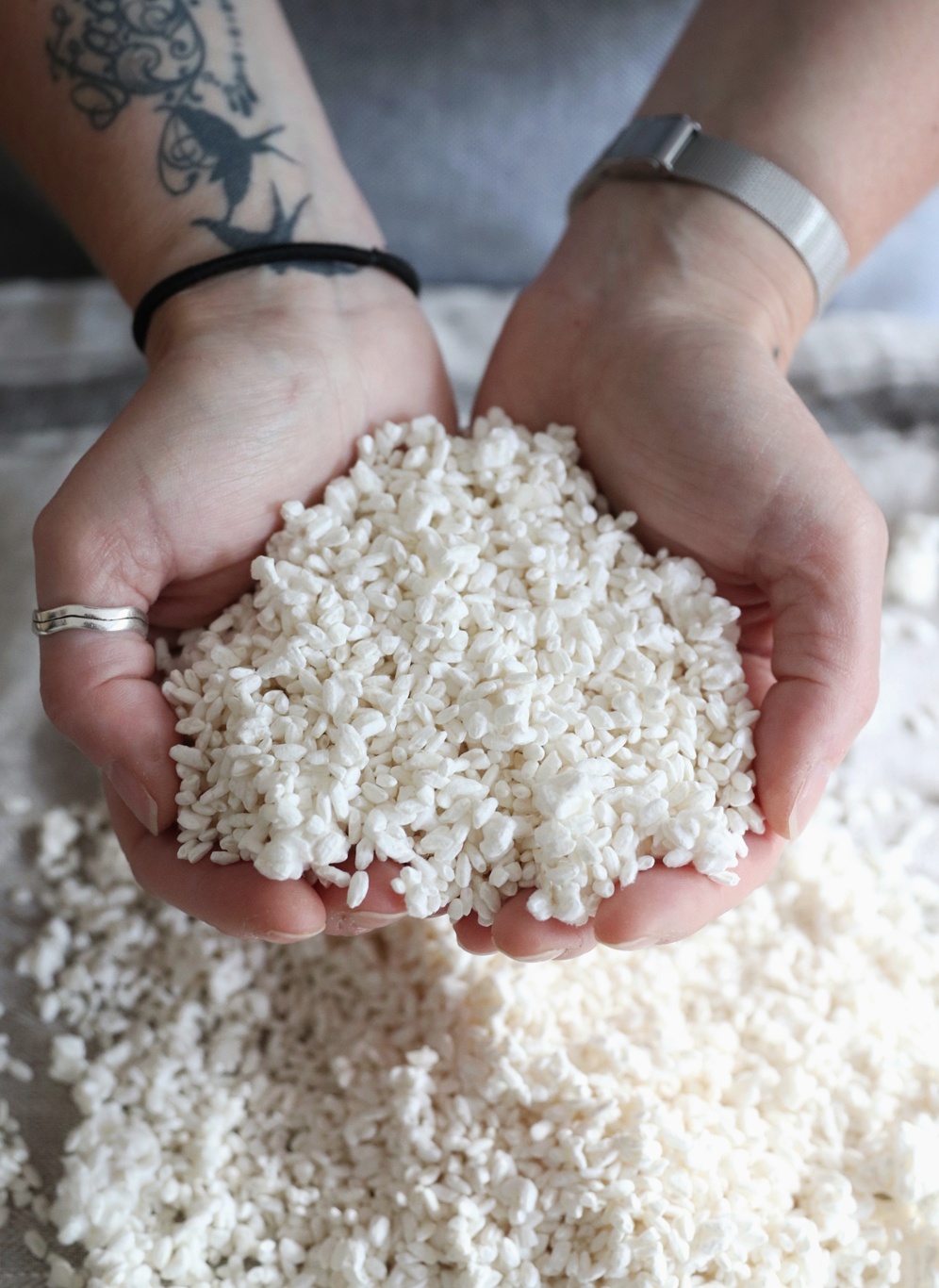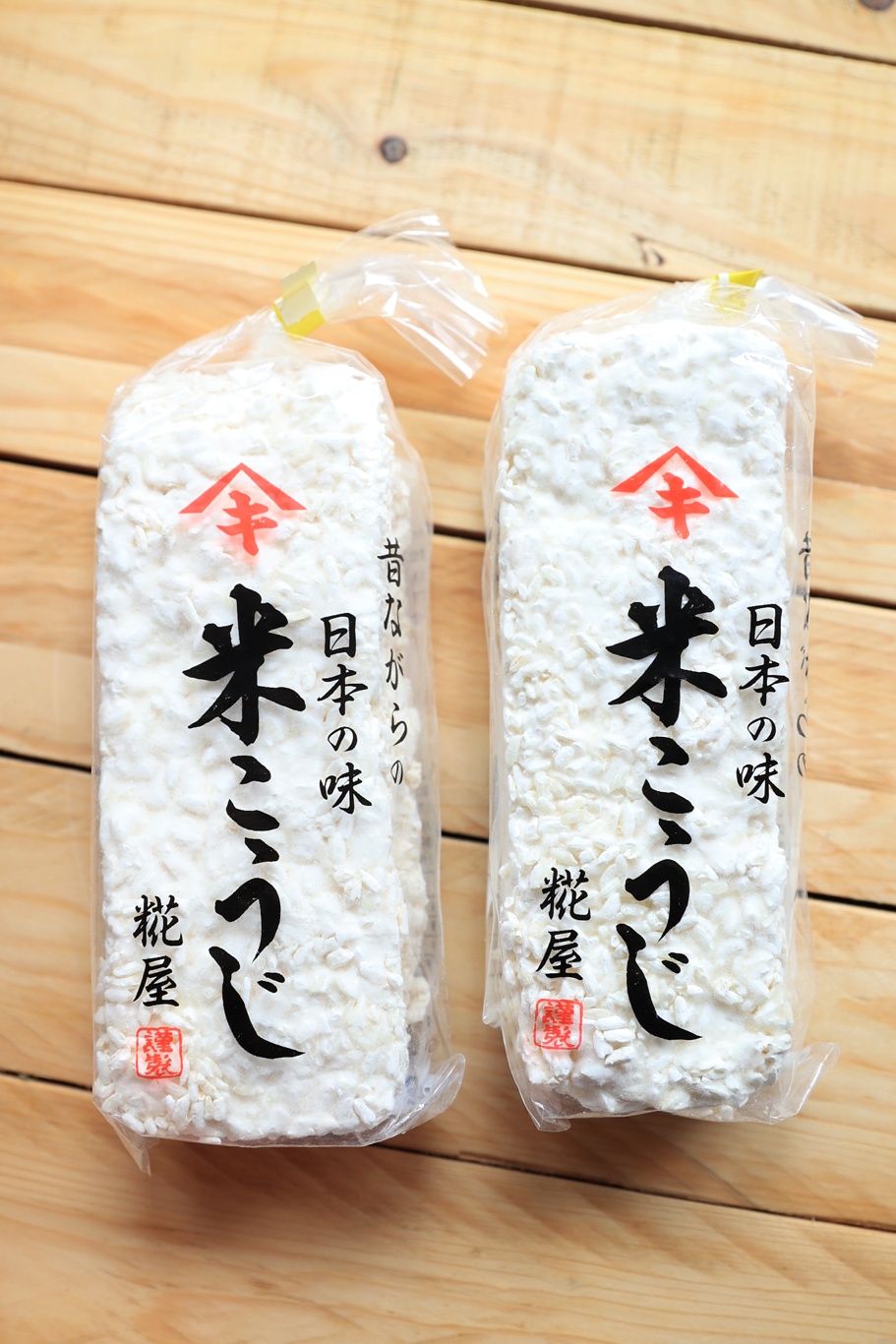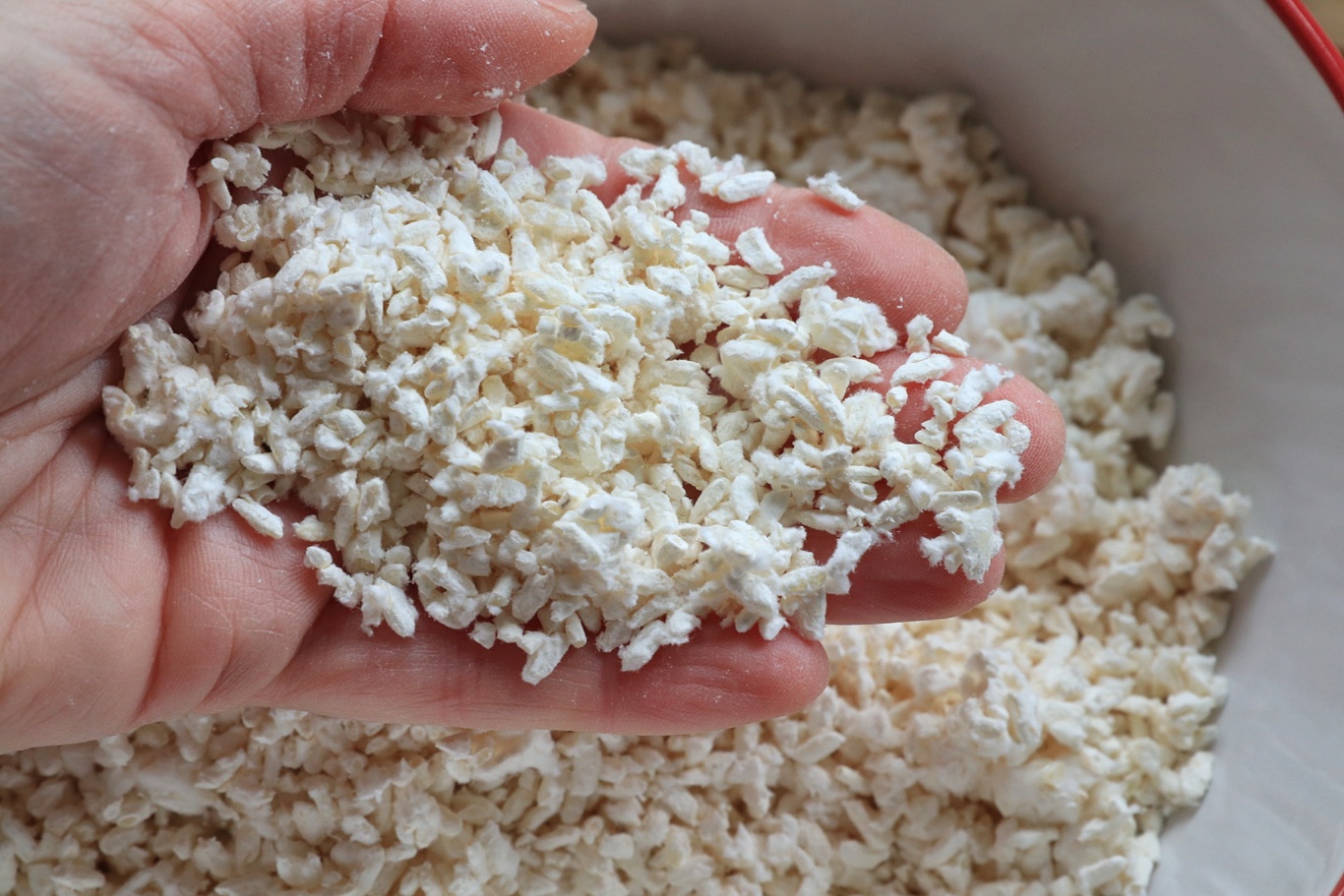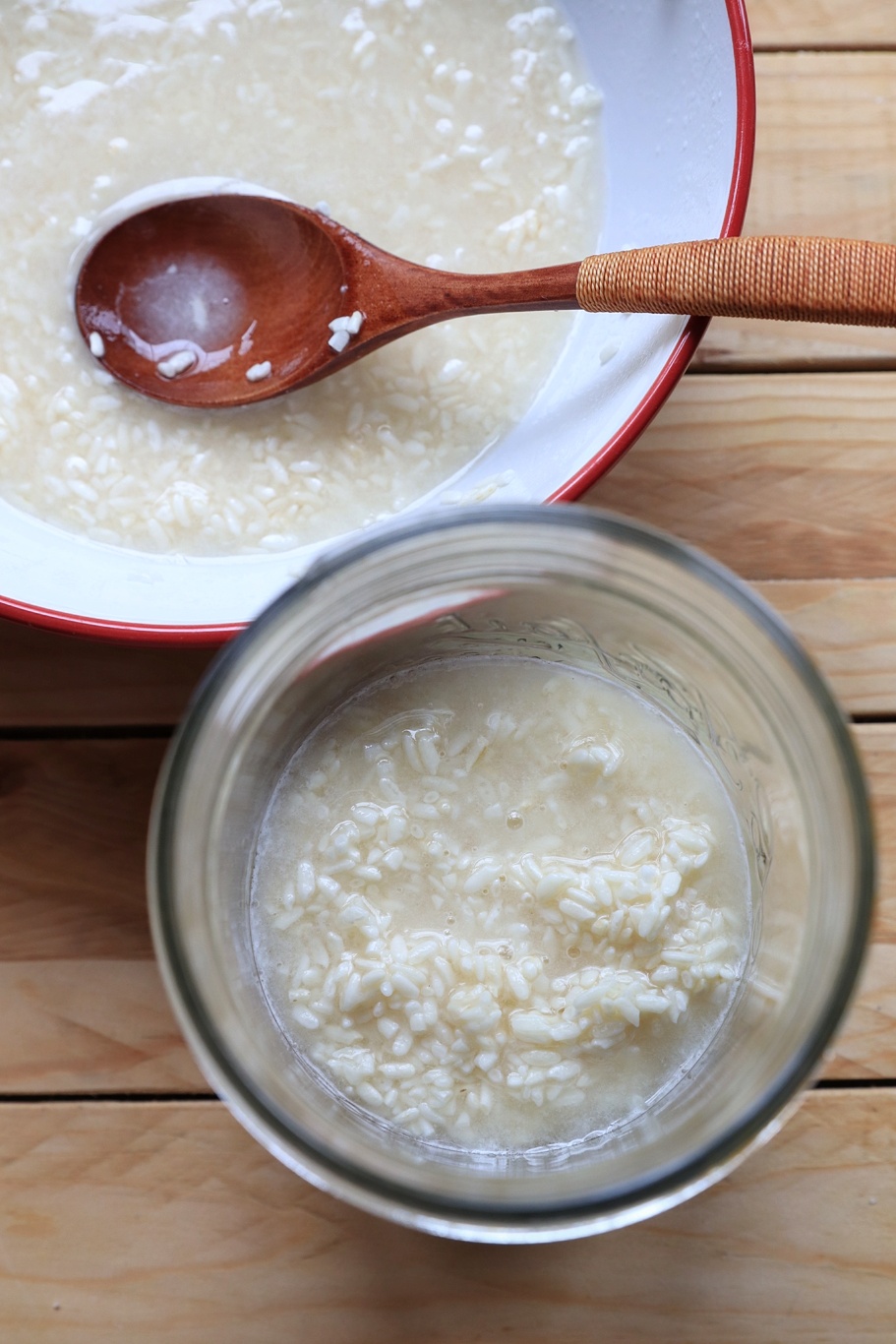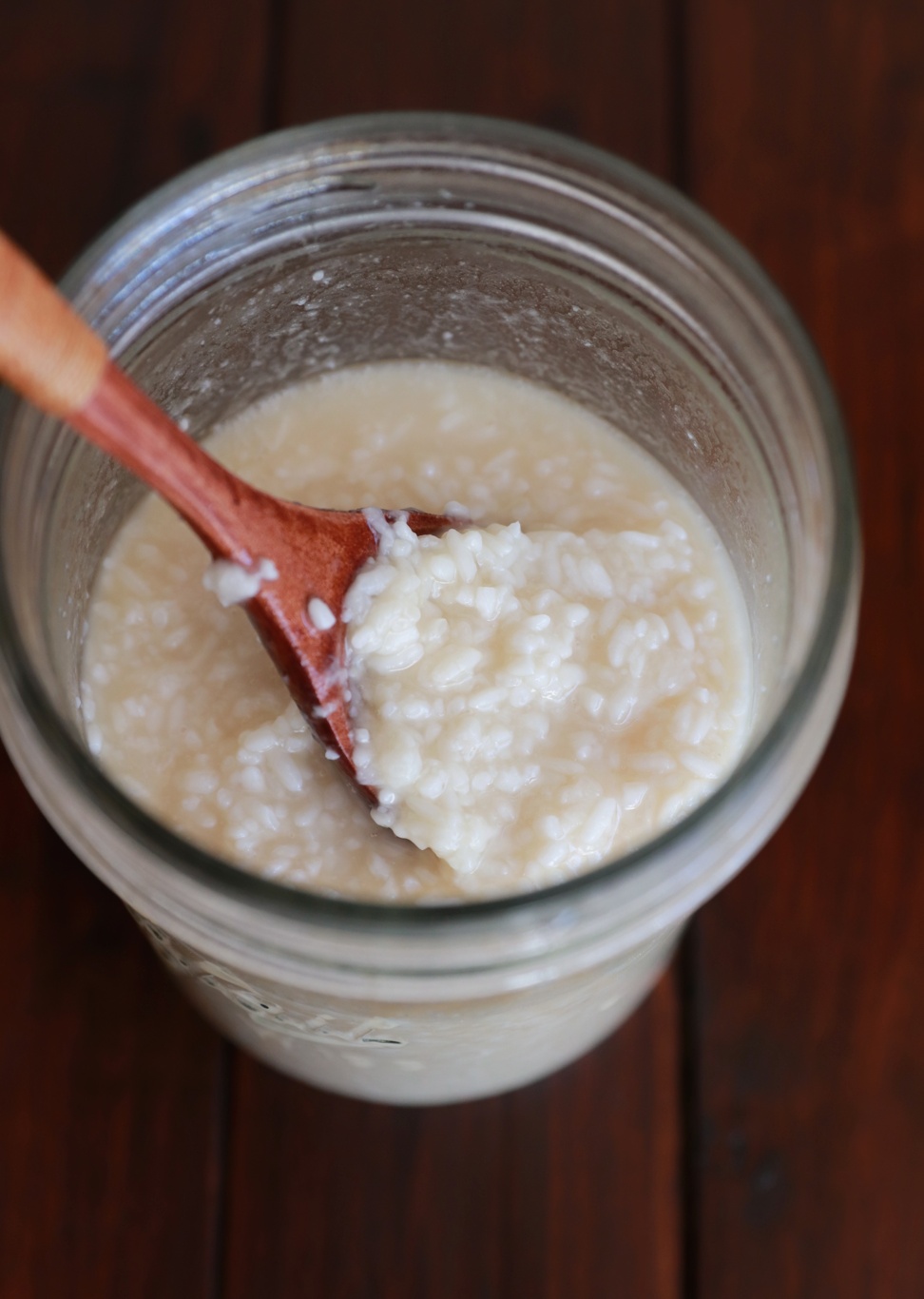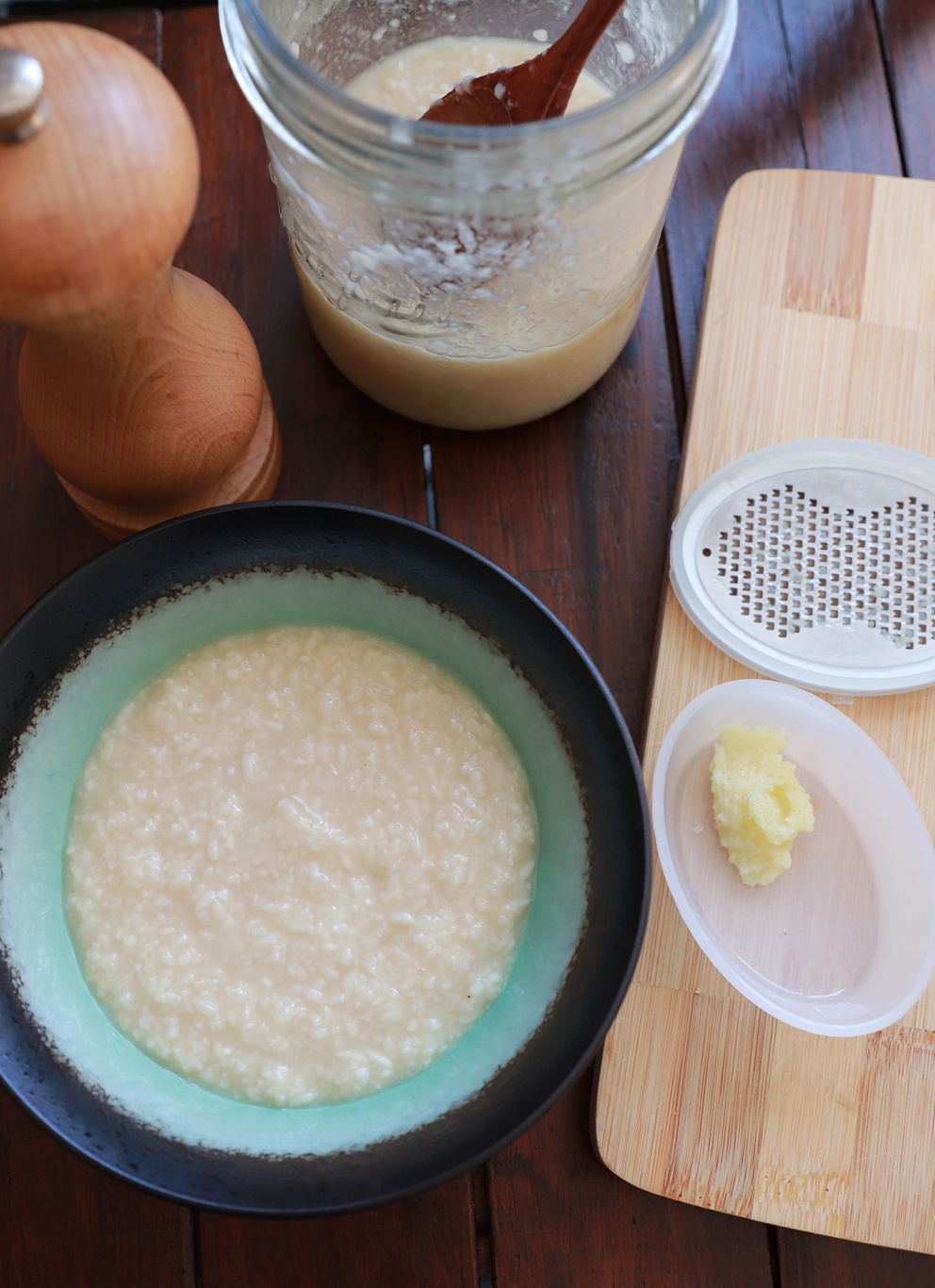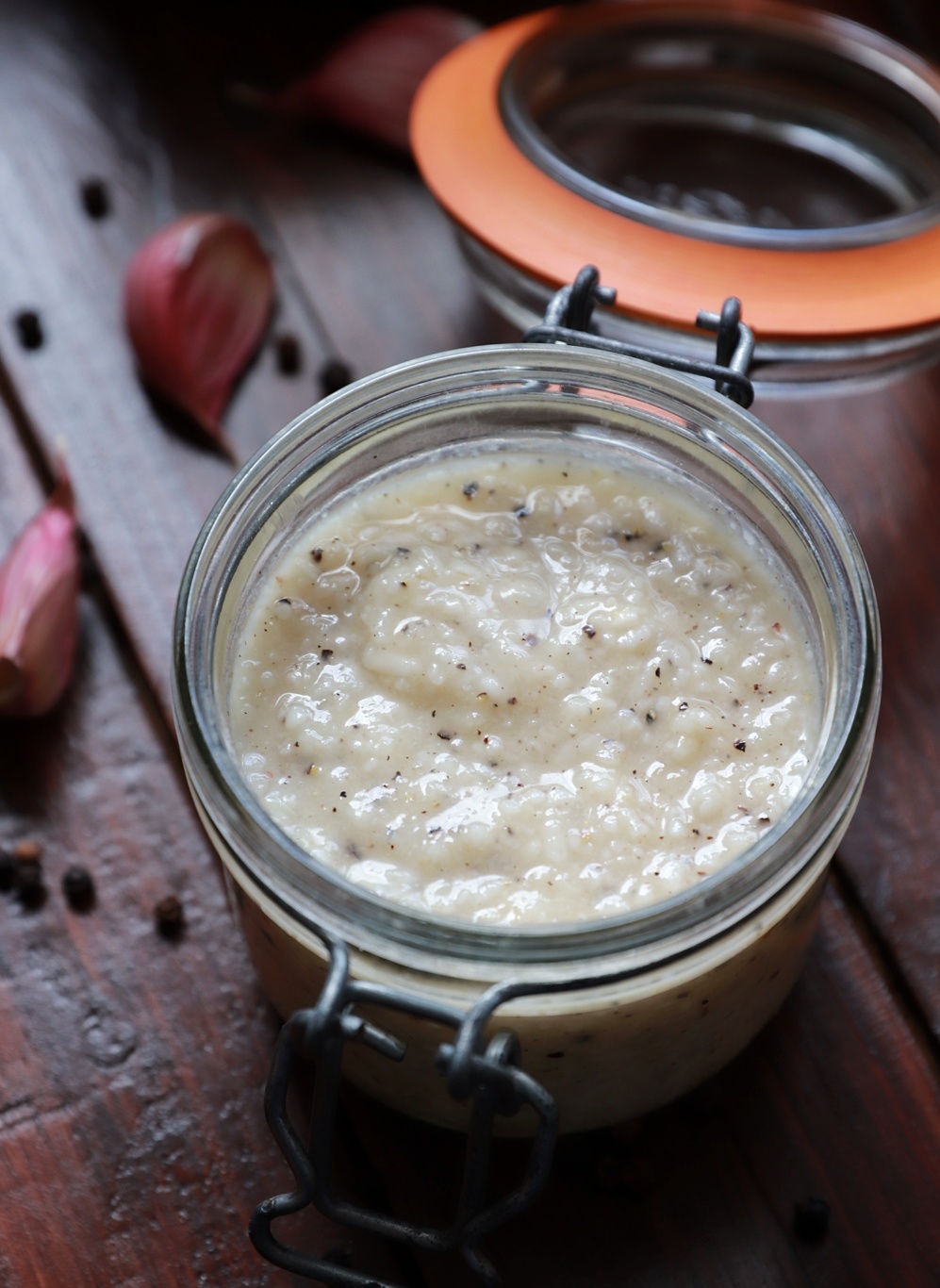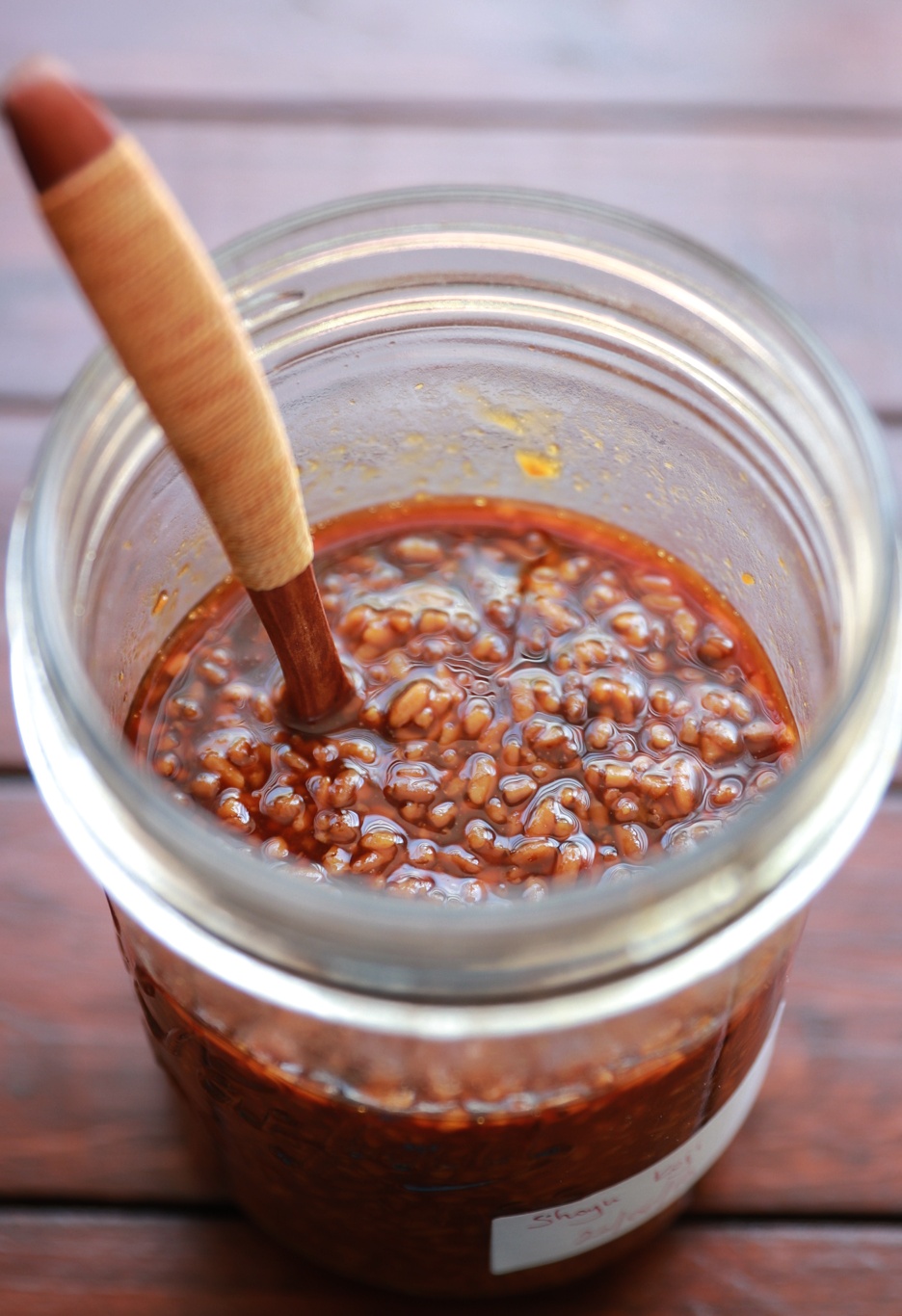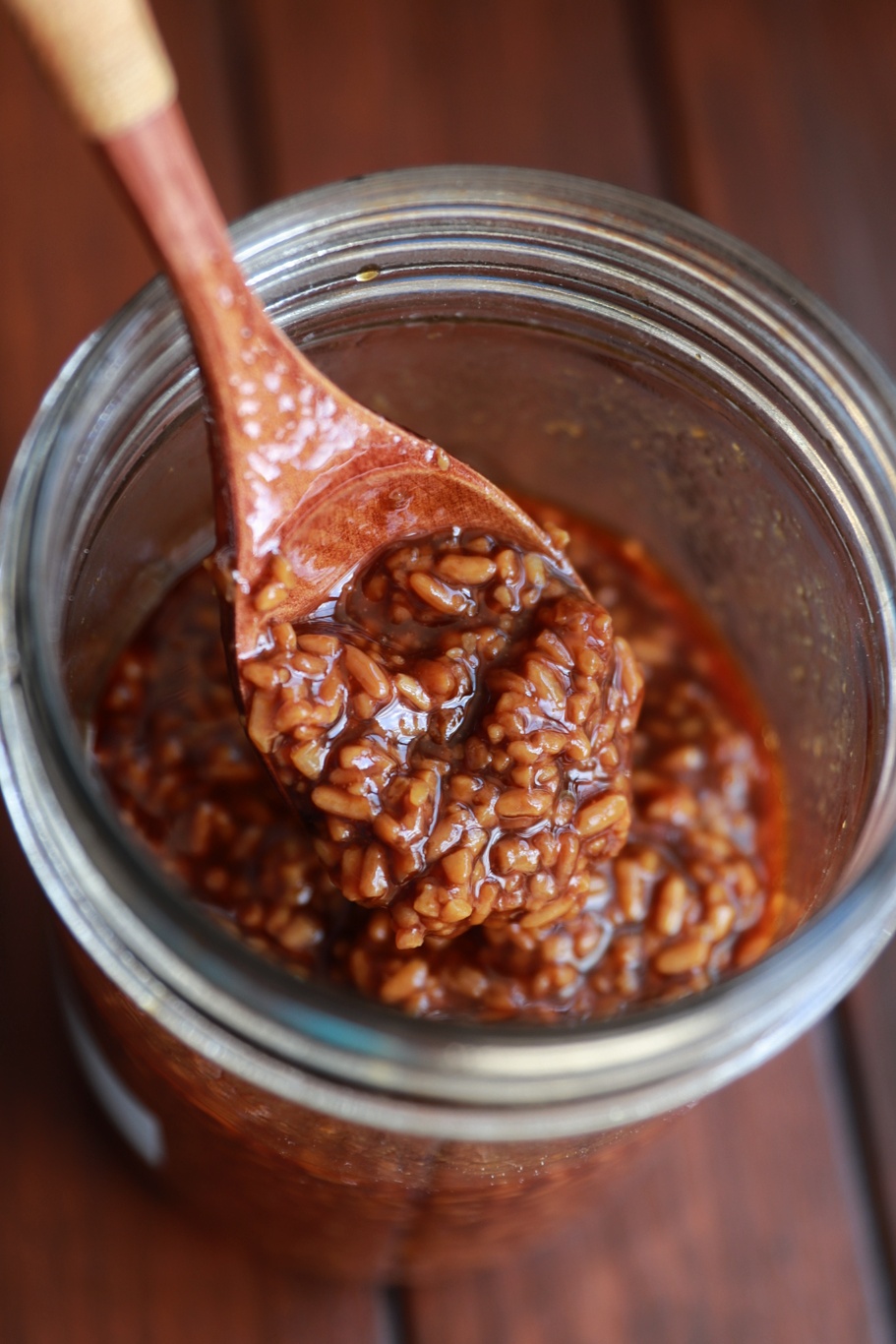You have may heard about koji, but if not, let me introduce this versitile, super powerful, centuries old Japanese secret!
But what is this humble little organism? I’m not going into a detailed scientific description, it is enough to know for now that koji is a fungi ( a mold ) called aspergillus oryzae that responsible for the fundamentals of the Japanese cuisine. If this mold didn’t exist there would be no miso, soya sauce, sake, shochu, mirin, amazake… just to mention a few. The steamed rice inoculated with the spores of the aspergillus oryzae, kept in an incubated chamber to let the rice ( or legumes, grains ) ferment. The end result is the kome aka rice koji which I use in this recipe to make shio ( salt ) and shoyu ( soya sauce ) koji.
Shio and shoyu koji
I started my koji journey nearly a year ago as we came back from Japan. I brought back some dried koji rice and I made my first miso. After a couple of failures, I felt more curious about it and this made me want to explore and experience more! Now I have a few different batches of miso waiting to be ready in my “fermentation station”.
To make these tasty marinades you don’t need a lot of ingredients but you will need patience. The fermentation time is somewhere between 8-10 days at room temperature. You need to make sure that your equipment and tools that you use to make them are spotlessly clean and sanitised!
They are very easy to make and you can use them as marinades, dressings, they are great as a substitute of salt or to make a quick tsukemono.
For the shio koji:
- 200g rice koji
- 30g sea salt
- 250-300g water
For the shoyu koji:
- 200g rice koji
- 250-300g natural soy sauce
- For the shio version dissolve the salt into the water and add it to the rice. Stir it well and pour it in a cleaned jar. Place a muslin cloth on top of the jar and and fit it with a rubber band. Place it in a quiet corner of your kitchen.
- For the shoyu version, mix well the ingredients and repeat the rest of the process.
- From now on the fermentation process is basically the same with both of koji. The mixture need to be stirred every day until it’s ready. As the fermentation comes to the end the mix going to be thicker and start to smell and taste sweeter.
Now they are ready to use! Keep them in a refrigerator covered. Enjoy!
Follow my blog and in my next post I will show you how I’m using these tasty Japanese seasonings! To be continued…
Did you know that you can follow me on Instagram too where I post regularly about my activities.
Enjoy!

